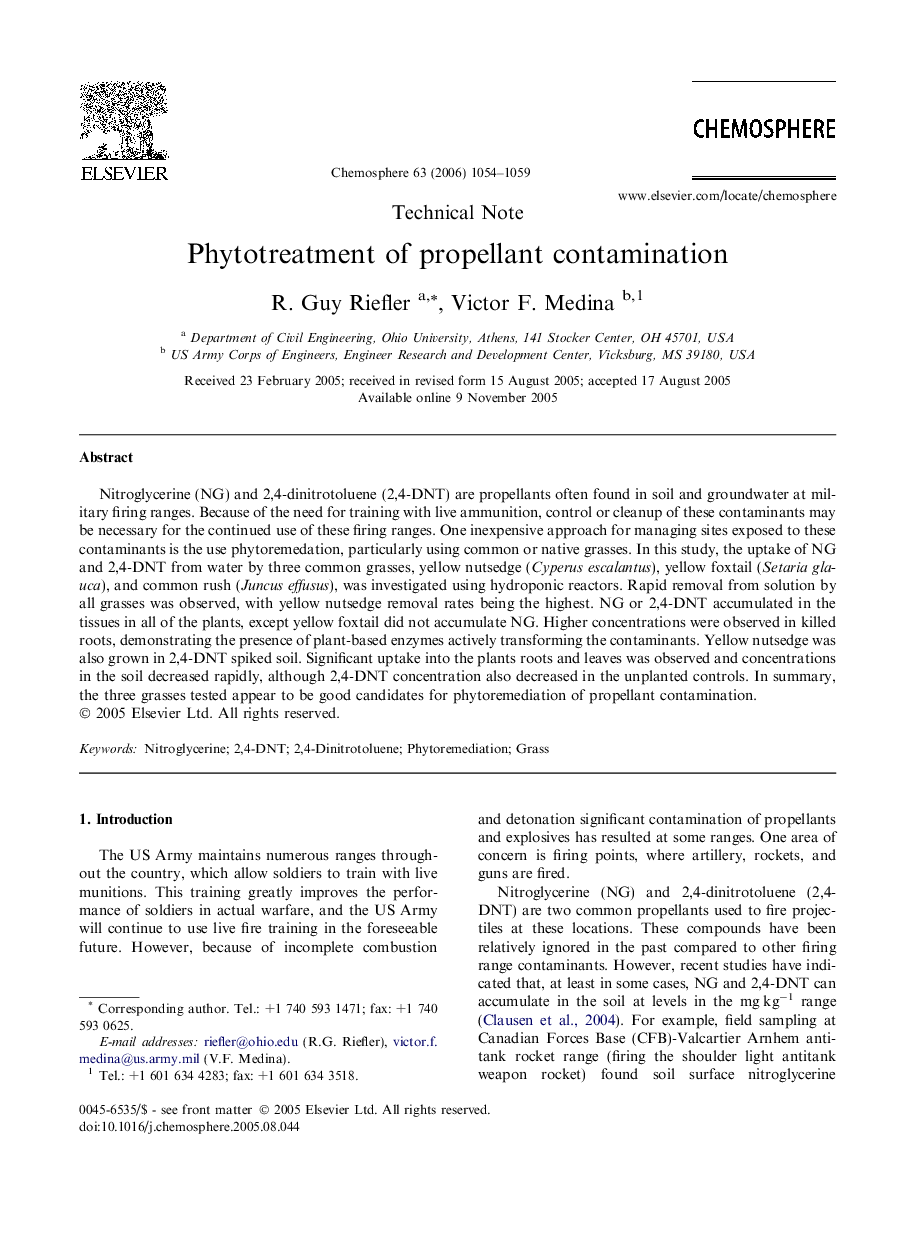| کد مقاله | کد نشریه | سال انتشار | مقاله انگلیسی | نسخه تمام متن |
|---|---|---|---|---|
| 4417003 | 1307811 | 2006 | 6 صفحه PDF | دانلود رایگان |

Nitroglycerine (NG) and 2,4-dinitrotoluene (2,4-DNT) are propellants often found in soil and groundwater at military firing ranges. Because of the need for training with live ammunition, control or cleanup of these contaminants may be necessary for the continued use of these firing ranges. One inexpensive approach for managing sites exposed to these contaminants is the use phytoremedation, particularly using common or native grasses. In this study, the uptake of NG and 2,4-DNT from water by three common grasses, yellow nutsedge (Cyperus escalantus), yellow foxtail (Setaria glauca), and common rush (Juncus effusus), was investigated using hydroponic reactors. Rapid removal from solution by all grasses was observed, with yellow nutsedge removal rates being the highest. NG or 2,4-DNT accumulated in the tissues in all of the plants, except yellow foxtail did not accumulate NG. Higher concentrations were observed in killed roots, demonstrating the presence of plant-based enzymes actively transforming the contaminants. Yellow nutsedge was also grown in 2,4-DNT spiked soil. Significant uptake into the plants roots and leaves was observed and concentrations in the soil decreased rapidly, although 2,4-DNT concentration also decreased in the unplanted controls. In summary, the three grasses tested appear to be good candidates for phytoremediation of propellant contamination.
Journal: Chemosphere - Volume 63, Issue 6, May 2006, Pages 1054–1059